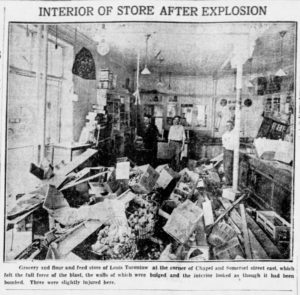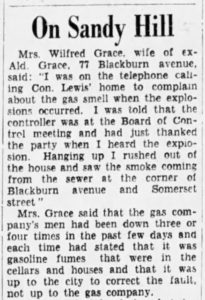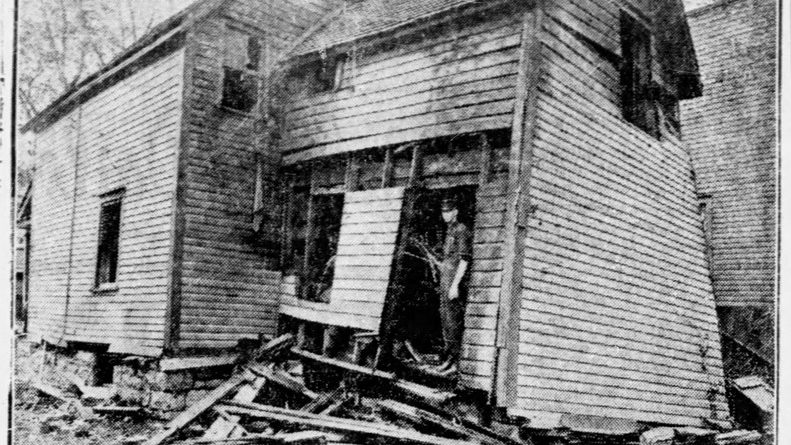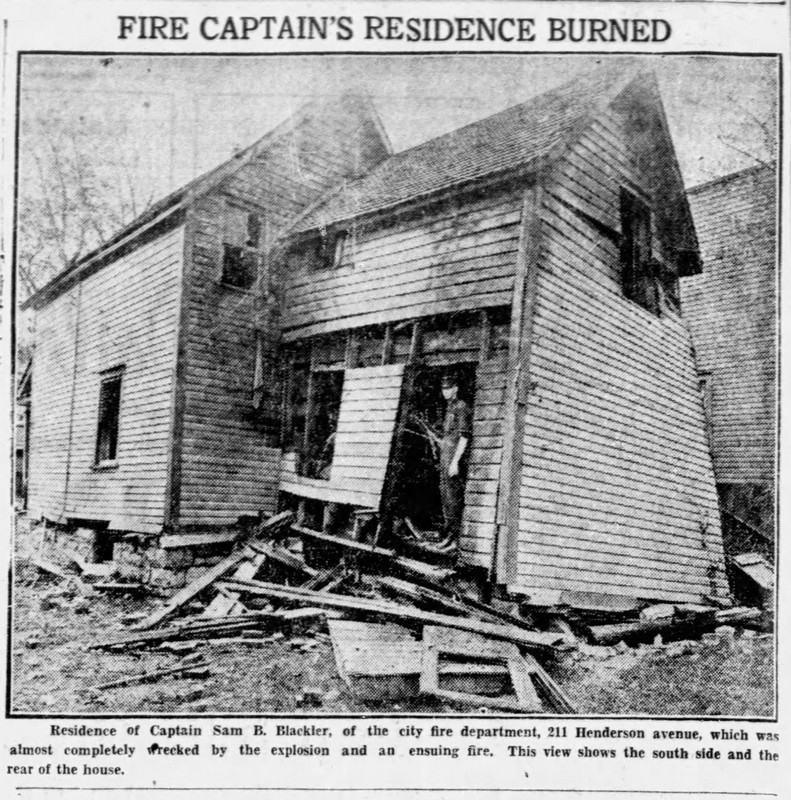From Ken Clavette’s Album of Bygone Sandy Hill
The explosions that rocked Sandy Hill
Ken Clavette
When we first moved to Henderson Avenue in 1981, our landlady had told us the story about the time sewers exploded down the hill. Already the events were fading out of living memory save for a few of the older, long-time residents in the neighbourhood; but it was true. Ninety years ago, on January 28, 1931, Sandy Hill was rocked by a second sewer explosion, the first having happened two years earlier on May 29, 1929. Both started in Centretown and travelled through the sewers, hitting Sandy Hill, Lowertown, Vanier, and New Edinburgh.
 As the explosions travelled along, they blew off manhole covers along Templeton Street, Nelson Street, and Somerset Street East. In 1929, 192 Henderson Ave., home to Charles Nicholson, had a hole blasted through the living room floor. 211 Henderson owned by Sam Blackler, a Captain at Fire Station #3, was knocked off its foundations, and the apartment building at the corner of Somerset and Chapel was badly damaged with the ground floor grocery store completely wrecked.
As the explosions travelled along, they blew off manhole covers along Templeton Street, Nelson Street, and Somerset Street East. In 1929, 192 Henderson Ave., home to Charles Nicholson, had a hole blasted through the living room floor. 211 Henderson owned by Sam Blackler, a Captain at Fire Station #3, was knocked off its foundations, and the apartment building at the corner of Somerset and Chapel was badly damaged with the ground floor grocery store completely wrecked.
While extensive damage was caused to the sewers and buildings along the way, only one person lost their life in both explosions. Hannah Hayden, aged 73, was in 37 Templeton St. in 1929 when flames entered, setting her clothing alight. She escaped the house but succumbed to her injuries. Several others suffered burns, cuts, and broken bones.

The Ottawa Citizen reported that the January 1931 explosion sent 60-pound sewer covers flying over the top of hydroelectric poles, shattering streetlights and blacking out homes from Henderson to Range Road. Residents told the newspapers that the sewer covers were transported 100 feet away, snapping into pieces when they landed.
Louis Torontow, the owner of the Somerset grocery store badly damaged in 1929, immediately knew what was happening when he heard the explosion but was so traumatized that he was powerless to move. He told a reporter “I just couldn’t get away from there and seemed rooted to the spot.” However, his daughter was less affected: “My little girl was reading a book in the house. When she heard the explosions, she came out to the front of the store, book in hand, looked at the smoking manhole and then went back in the house and continued reading. It sure must have been an absorbing book.”
And in 1931, Lillian Pettapiece, who had suffered serious burns in the 1929 explosions, was travelling on a bus near her home when a manhole exploded. She collapsed in fright and shock. Children were skating on the Sandy Hill rink when gaping holes appeared in the streets around the rink. Others were outside during both explosions but were fortunately unharmed.
There were several studies and inquiries into the possible cause of the explosions, but no conclusions made. Mayor John Allen wanted to set up a judicial inquiry, but that effort failed. The City sued the Ottawa Gas Company, unsuccessfully. The exact cause of the explosions was never determined, though leaking “illuminating gas” used for lighting was believed to have been the culprit. However, poor ventilation of the sewer system before 1929 that was not corrected in the following two years was also to blame. The next time you are to walk over a manhole cover in Sandy Hill, remember the fright residents were given 90 years ago—then maybe step around it, in memory of those moments.
Forgotten Ottawa recently released a short video about the sewer explosions:

